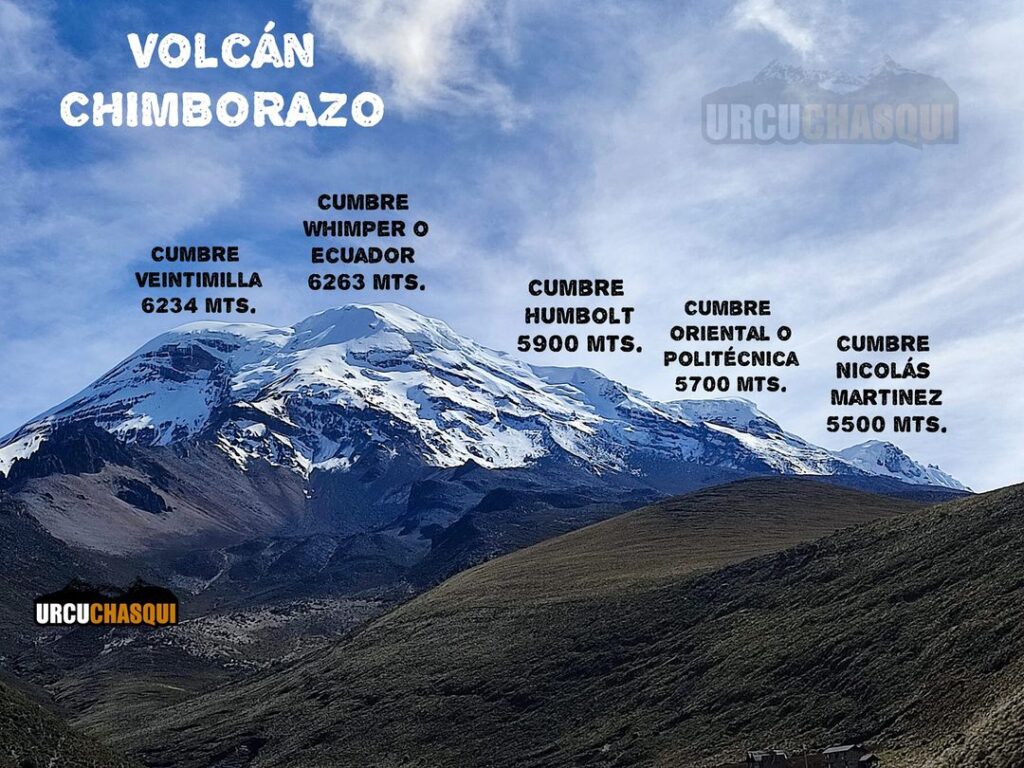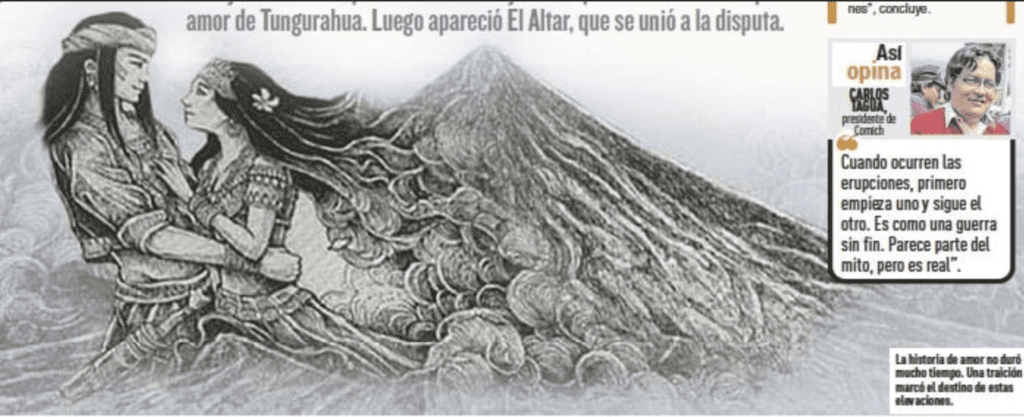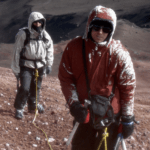Mount Chimborazo is a popular destination for climbers and mountaineers, particularly those seeking high-altitude challenges. It’s one of the most famous and prominent mountains in Ecuador, and its proximity to the equator makes it a unique climbing experience due to its elevation and location.
While Mount Chimborazo is not the tallest mountain in the world, it is the farthest point from the Earth’s center due to the planet’s oblate spheroid shape. This distinction, along with its picturesque landscapes and challenging climbing conditions, attracts adventurers from around the world.
Climbing Mount Chimborazo requires a good level of physical fitness, mountaineering skills, and proper equipment due to the high altitude, technical routes, and often harsh weather conditions. There are multiple routes to the summit, each varying in difficulty. The most common routes include the Whymper Route and the Normal Route.
Because of its accessibility and popularity, there are guided tours and climbing expeditions offered by local tour operators and mountaineering organizations. These guided trips provide climbers with necessary equipment, experienced guides, and support to make the ascent safer and more manageable.
It’s worth noting that climbing any high-altitude mountain comes with inherent risks, including altitude sickness, exposure to extreme weather, and technical challenges. As a result, climbers need to be well-prepared, properly trained, and aware of the potential dangers before attempting to summit Mount Chimborazo or any other mountain of similar stature.

Routes to climb Mount Chimborazo
Mount Chimborazo offers several routes for climbers to attempt, each varying in difficulty and technical requirements. Here are some of the notable routes:
Whymper Route: This is the most popular and frequently climbed route on Mount Chimborazo. It was named after Edward Whymper, the British mountaineer who made the first ascent of the Matterhorn. The Whymper Route is a challenging climb that involves glacier travel, steep snow slopes, and some technical sections. Climbers typically start from the Carrel Hut and make their way up the southwestern flank of the mountain. The route requires good mountaineering skills and acclimatization to the altitude.
Normal Route: The Normal Route is considered less technical than the Whymper Route, making it a good option for climbers with less experience in mountaineering. It starts from the Edward Whymper Refuge and follows a gradual ascent along the southern ridge of Chimborazo. While less technical, climbers still need to be well-prepared for the high altitude and challenging weather conditions.
Southwest Ridge Route: This is a more advanced route that offers a mix of glacier travel and technical rock climbing. Climbers start from the Carrel Hut and ascend the southwest ridge. The route involves negotiating rock bands and steep sections, making it suitable for experienced climbers looking for a more challenging ascent.
Direct Route: The Direct Route is a highly technical and difficult route that requires advanced climbing skills. It involves steep ice and rock climbing, as well as traversing crevasses and challenging terrain. This route is only recommended for highly experienced mountaineers who are well-acclimatized and skilled in alpine climbing.
Chimborazo-Veintimilla Route: This route involves a traverse between Mount Chimborazo and nearby Veintimilla Peak. It’s a demanding route that requires solid climbing abilities and the ability to navigate complex terrain.
These are just a few of the routes available on Mount Chimborazo. Climbers must be accompanied by an ASEGUIM certified guide to legally climb Chimborazo. Additionally, climbing with experienced guides and taking the necessary time for acclimatization are essential for a safe and successful ascent of this high-altitude peak. Keep in mind that mountain conditions and route popularity can change over time, so it’s advisable to consult with local mountaineering organizations or guides for the most up-to-date information before attempting a climb.

Edward Whymper: from Matterhorn to Mount Chimborazo
Edward Whymper (1840–1911) was a British mountaineer, artist, and author who is best known for his pioneering ascents in the Alps, as well as for his involvement in the first ascent of the Matterhorn. He made significant contributions to the field of mountaineering and exploration during the 19th century.
Whymper’s most famous achievement was the first successful ascent of the Matterhorn, a challenging and iconic peak in the Swiss Alps. On July 14, 1865, Whymper led a team of climbers to the summit, but tragedy struck during the descent. Four members of the party fell to their deaths, while Whymper and two local guides managed to survive. The Matterhorn ascent and its tragic aftermath became widely known and discussed, shaping public perceptions of mountaineering and alpine exploration.

In addition to his climbing pursuits, Whymper was also an accomplished artist and illustrator. He documented his adventures through sketches, paintings, and written accounts, often including detailed visual representations of the landscapes and mountains he explored.
Whymper’s writings and books, such as “Scrambles Amongst the Alps” and “Travels Amongst the Great Andes of the Equator,” provided valuable insights into the challenges and triumphs of early mountaineering. He also advocated for safety in mountaineering and introduced improved climbing techniques.
After his alpine accomplishments, Whymper turned his attention to exploring the Andes mountains in South America. He conducted a series of expeditions to Ecuador and made several first ascents of peaks in the region.
Edward Whymper’s legacy continues to influence mountaineering and exploration. His name is often associated with the Whymper Route on various mountains, including the one on Mount Chimborazo, and he is remembered for his contributions to the development of modern mountaineering techniques and safety practices.
Alexander von Humbolt and Chimborazo
Alexander von Humboldt’s work had a profound impact on scientific thought and exploration, influencing generations of scientists, naturalists, and thinkers. He is often regarded as one of the greatest scientific minds of his time and is celebrated for his holistic approach to understanding the natural world. Alexander von Humboldt had a significant connection to Mount Chimborazo, which is a prominent peak in the Andes mountain range of Ecuador. During his travels in South America, Humboldt attempted to reach the summit of Chimborazo and conducted important scientific observations related to the mountain.
In 1802, during his expedition to the Spanish Americas, Humboldt and his companion Aimé Bonpland attempted to climb Mount Chimborazo. While they did not reach the absolute summit due to the technical challenges and harsh conditions, they managed to reach an elevation of about 19,286 feet (5,878 meters), which was a remarkable accomplishment at the time. This altitude was an unprecedented achievement in the field of mountaineering and exploration.
Humboldt’s exploration of Chimborazo led to significant scientific observations and findings, including:
Altitude and Climatic Zones: Humboldt observed the distinct climatic zones as they ascended the mountain. This observation contributed to his concept of “vertical zonation,” which describes the changes in vegetation and climate with increasing altitude.
Barometric Measurements: Humboldt used a barometer to measure changes in atmospheric pressure as he climbed Chimborazo. He noted that atmospheric pressure decreased with altitude, providing evidence for the existence of an atmosphere that thins out at higher elevations.
Temperature Gradient: Humboldt recorded temperature variations along the mountain’s slopes, noting the decrease in temperature with elevation. This observation contributed to his understanding of temperature changes in relation to altitude.

Magnetic Observations: Humboldt conducted magnetic measurements on Chimborazo, noting variations in the Earth’s magnetic field with altitude. This added to his broader investigations into Earth’s magnetism.
Humboldt’s work on Chimborazo, along with his extensive exploration and scientific inquiries across the Americas, laid the foundation for his broader ideas about the interconnectedness of nature, the unity of natural forces, and the relationships between physical phenomena. His writings, including his detailed accounts of his travels and observations, had a profound influence on various scientific fields, including geography, geology, botany, and climatology.
The legacy of Humboldt’s exploration of Mount Chimborazo and his comprehensive approach to studying the natural world continues to inspire scientists, researchers, and explorers to this day.
TAME Flight 120 plane crash on Chimborazo
The plane crash on Mount Chimborazo in Ecuador occurred on January 28, 2002 when TAME Flight 120 lost contact during severe weather conditions. The TAME Flight 120 was a domestic flight operated by the Ecuadorian airline TAME, traveling from Quito, the capital city of Ecuador, to Cuenca. The aircraft, an Embraer 120 Brasilia, encountered severe weather conditions and low visibility as it approached Cuenca. The crew attempted an instrument approach to the airport, but due to the challenging weather, the airplane crashed into Mount Chimborazo, one of the highest peaks in the Andes mountain range.
All 31 people on board, including passengers and crew members, tragically lost their lives in the crash. The wreckage was scattered over a wide area of the mountain, making recovery and investigation efforts difficult.
The crash of TAME Flight 120 was a significant event in Ecuador’s aviation history, leading to increased focus on aviation safety and improved regulations. The accident highlighted the importance of proper training for pilots to handle adverse weather conditions and the need for reliable navigation and communication equipment in mountainous regions.
Mount Chimborazo, despite being located near the equator, has an elevation of over 6,000 meters (20,000 feet) above sea level, making it one of the highest points on Earth when measured from the center of the Earth due to the planet’s oblate spheroid shape. Its height and challenging weather conditions can pose significant risks to aircraft, especially in situations where visibility is compromised.
The Kichwa Mythology of Mount Chimborazo
Mount Chimborazo, Tungurahua, and El Altar are all significant peaks in the Andes mountain range of Ecuador, and they hold cultural and mythological significance for the indigenous peoples of the region. These mountains are often associated with ancient legends and stories that reflect the beliefs and values of the local communities. Here are some mythological stories related to these mountains:
Chimborazo and Tungurahua: The Love Story of Mama Tungurahua and Taita Chimborazo:
This myth tells the story of a love affair between Mama Tungurahua, the volcanic goddess associated with Mount Tungurahua, and Taita Chimborazo, the mountain spirit of Mount Chimborazo. Their love was passionate but tumultuous, with the fiery temper of Mama Tungurahua causing volcanic eruptions and lava flows, which symbolized her anger. It is said that their relationship continues to influence the volcanic activity of Tungurahua.

El Altar: The Altar of the Gods:
El Altar is a complex of peaks and ridges resembling a massive stone altar. It has significant mythological importance in the Andean culture. According to local legends, El Altar was the sacred place where the gods congregated to hold their meetings. It is said that the mountain was a place of worship and reverence, and the indigenous people held rituals and ceremonies there.
El Altar: The Seven Golden Cities:
Another myth associated with El Altar is the legend of the “Seven Golden Cities.” According to this story, the mountain was once home to seven golden cities inhabited by a prosperous civilization. However, the inhabitants became arrogant and disrespectful to the gods. In response, the gods punished them by causing a series of natural disasters, destroying the cities and transforming them into the rocky landscape that is seen today.
These myths reflect the deep connection between the indigenous cultures of Ecuador and the natural world. Mountains in particular often hold a spiritual and symbolic significance in these cultures, representing powerful deities, ancestors, and natural forces. The stories associated with Chimborazo, Tungurahua, and El Altar not only provide insight into the rich mythology of the region but also demonstrate the ways in which people have sought to understand and explain the forces of nature around them.
Jake is originally from Sydney and co-founded Ecuador Eco Adventure with Wlady back in 2006. Together they built one of the country's most prominent climbing and hiking agency that is number one in summit attempts of Chimborazo, Cotopaxi, Antisana, and Cayambe. Ecuador Eco Adventure has since been recommended in National Geographic Adventure, The Rough Guide, and the Lonely Planet.



0 Comments